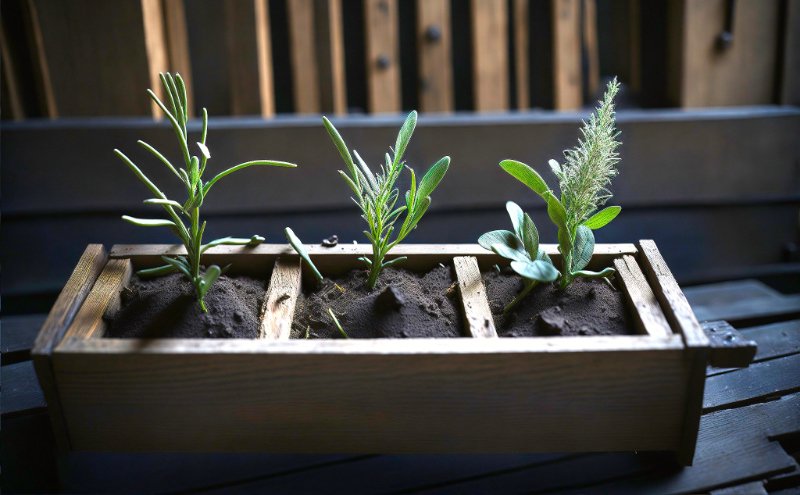How to Grow Herbs in a Window Box?
Everyone loves to experiment with herb gardening and even the best herb garden design was a result of some creative thinking and experimentation. Many people are scared to grow their herbs only because they think they have zero knowledge on how to plant herbs. Or they feel that they will not be able to design an herb garden the way it supposed to be. Well if you are one concerned about complexities of herb gardening, let me tell you it’s not a big deal. Your imaginations combined with our proper guides will help you grow an herb garden of your own.
If you do not have ample space in your backyard, I’ll suggest you to start with something small yet utilizable. I believe that anyone can easily grow some of the herb plants that they love to eat or add in their food recipes. If you have a small size apartment, then you can grow herbs in a window box. Just think how amazing it would to have fresh herbs or a window box full of healthy herbs growing just outside your apartment’s kitchen window.
Key Points:
- Window boxes allow growing herbs in small spaces like apartments.
- Select petite herbs like thyme and basil suited for tight quarters.
- Use soaked potting mix and sow seeds according to packet spacing.
- Place the window box in full sun for optimal growth.
- Harvest fresh oregano, chives and other herbs right from your window.
Benefits
Growing herbs in window box will save you cash at the market, and also get fresh-from-the garden herbs right at your kitchen’s window. Remember that adding fresh herbs to your recipes is way better than buying frozen herbs from the marker. Also, the satisfaction that you get from growing your own herbs is indeed inexpressible. You can also impress your friends and make them their favorite flavor-rich dish without any hassle of going to the market.
Where to Buy Window Boxes?
Window boxes either can be made at home through recyclable items or can be purchased at any home improvement store or any garden center. Growing herbs in a window box is easy, effortless; take very less time and very little skill. There is hardly any excuse on why you shouldn’t try this method of herb gardening.
What Herbs You Can Grow In Window Box?

When selecting herbs for a window box garden, choose varieties that are compact, hardy and suited for container growing. Most culinary herbs will thrive in the confined space if given proper care.
Some excellent options include:
- Basil – Try dwarf varieties like bush basil that grow under 12 inches tall. Sweet basil is a versatile culinary herb for sauces, pesto and more.
- Thyme – Miniature creeping thymes or lemon thyme offer dense, low foliage perfect for window boxes. Thyme imparts robust flavor to meats, soups and stews.
- Oregano – Dwarf oregano stays compact. The pungent, aromatic leaves add bold taste to Italian dishes. Greek oregano offers the best flavor.
- Sage – Garden sage and tricolor sage remain relatively small and tolerate partial shade. Use the silver-green leaves to season fatty meats, cheeses and stuffings.
- Parsley – Curly leaf parsley boasts attractive ruffled foliage on plants under a foot tall. Flat leaf parsley offers an earthier flavor for garnishing.
- Chives – Chives produce pretty pink flowers. Both regular and garlic chives add mild onion flavor. Snip leaves as needed.
When planting different herbs together, be mindful of watering needs, sunlight requirements and growth habits. With smart choices suited to container life, a window box herb garden can thrive!
How to Grow Window Box Herbs?

- Use soaked potting soil. If the potting soil is not soaked then put it into a bucket, add water and mix it well until the potting soil is spongy and saturated.
- Spread the soil into the window box, and add compost to it. Tap the box on the kitchen shelf a few times so that the soil is settled. Leave a ¼ of an inch from the top and rest fill the box with the soil.
- Before sowing the seeds, read the instructions on the packet. Spacing plays a crucial role in a window box, as there isn’t much of it. Remember that each seeds need to be at least 1 inch away from the edges of the box to accommodate proper growth. If you are planning to grow multiple herbs in the same box then plan it accordingly as where each seed should be sowed. You can use your imagination to beautify your window box and add a striking outside appeal to your home.
- After you have planted your seeds, water them properly, then just sit around comfortable and just see that the soil is not soggy but moist. Before you know it, you’ll notice that the little seedling will pop out of the soil and reach for the sky. Just monitor their growth and snip the weakling using a scissor and fertilize them according to packaging.
Conclusion
A window box herb garden is an accessible way to grow your own flavors, even in a small space. Choose petite herbs like thyme and basil that will thrive in the compact area. Use quality potting mix, sow seeds according to packet spacing guidelines, and water gently to establish seedlings. Once sprouted, fertilize judiciously and snip away weak shoots. Position the box in full sun and watch your window come alive with sage, oregano and other herbs ready to harvest for kitchen use. With proper care and feeding, a window box provides endlessly fresh herbs just steps from your kitchen.
It’s that way to grow herbs in window boxes. For more such innovative ideas on herb gardening, please bookmark us. Also, leave your comment if you want to share some of your creative ideas on herb gardening. Happy Gardening!






